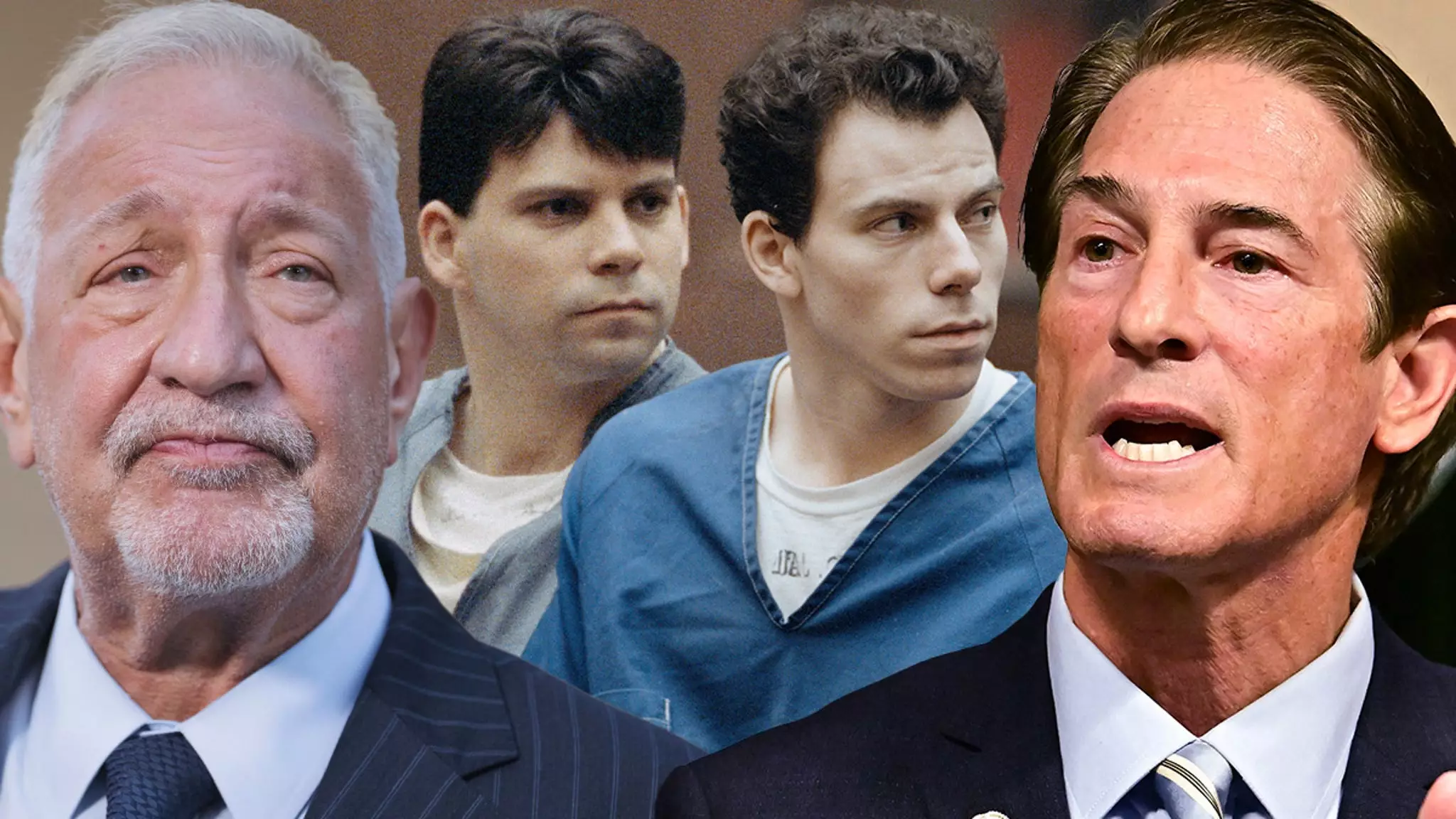The Menendez brothers—Erik and Lyle—remain synonymous with one of the most infamous criminal cases in American history. Convicted in 1994 for the brutal murder of their parents, their saga encapsulates issues of psychological trauma, legal controversies, and media sensationalism. As their legal strategies continue to unfold, the recent developments involving Los Angeles County District Attorney Nathan Hochman add complexity to an already convoluted narrative, revealing not just a legal battle but a fight for dignity and acknowledgment of past traumas.
District Attorney Hochman’s Stance
District Attorney Nathan Hochman has firmly positioned himself against recusing from the Menendez case, despite calls from the brothers’ attorney, Mark Geragos. This assertion hinges on his belief that there is no legitimate basis for his withdrawal. Hochman decries the defense’s arguments as nothing more than desperate maneuvers to distract from the core issue at hand—resentencing. To anyone observing from the sidelines, this paints Hochman as both the steadfast enforcer of justice and an impediment to a potential reevaluation of the brothers’ sentences under California’s penal code. However, is Hochman’s steadfastness a reflection of legal integrity or an unwillingness to confront the gray areas within the justice system?
Critics argue that Hochman’s ties to Beverly Hills, including shared educational backgrounds with the Menendez family, cloud his judgment. The emotional implications of his decisions are particularly highlighted by their legal representatives, who allege that Hochman is re-traumatizing the victims’ family through the insensitive display of crime scene images in court. Such actions not only raise ethical questions regarding the treatment of victims’ families but also invoke broader concerns about the legal system’s failure to balance retribution with compassion.
The Fallout: Public and Legal Reactions
The defense’s accusations against Hochman have incited a wave of public support for the Menendez brothers, drawing attention not only to their plight but also to deeper societal issues regarding childhood trauma, rehabilitation, and the long shadows cast by past infractions. Bryan Freedman, representing the Menendez family, openly criticized Hochman for prioritizing media visibility over genuine legal service, echoing sentiments commonly held by those advocating for criminal justice reform.
Freedman’s statement that Hochman seems disconnected from reality poses an urgent question: Is the District Attorney prioritizing the public perception of toughness on crime over the complexity of individual circumstances? This notion challenges the inherently black-and-white nature of crime and punishment, urging for a more nuanced approach to justice that recognizes emotional and psychological strife faced by not just victims but also the accused.
Governor Newsom and the Path to Clemency
As the legal saga continues, California Governor Gavin Newsom’s involvement further complicates matters. His order for a risk assessment of Erik and Lyle Menendez suggests potential avenues for clemency that could transform their lives post-incarceration. The upcoming court hearing, slated for next Friday, will be pivotal, as it aims to address both the recusal motion and the admissibility of the risk assessment report. Newsom’s approach reflects a growing trend towards understanding rehabilitation as a legitimate priority over mere punishment—a stark contrast to the retributive models that have dominated the American justice landscape.
However, the hearings and evaluations under scrutiny also raise ethical questions regarding the validity of such assessments. Could they potentially reduce the complexity of trauma and rehabilitation to mere statistics? As Erik and Lyle seek to unearth fresh evidence and appeal for resentencing, their legal journey serves as a potent reminder of the past’s persistent influence on an individual’s future—a narrative that both the courts and society must grapple with.
Confronting the Issues At Hand
The ongoing tension between the Menendez brothers and the DA’s office exemplifies the broader issues of how society punishes, rehabilitates, and ultimately understands the nuances of crime. As Erik and Lyle fight for their rightful place in the reformed penal system, their case calls for deeper introspection into the realities of victimhood, the complexity of familial relationships, and the psychological consequences of crime that often extend beyond the courtroom.
One cannot disregard the hope that perhaps their battle might catalyze important discussions about how the criminal justice system addresses childhood trauma and victim rights. In the milieu of crime and consequence, it’s this dichotomy that continues to challenge our societal values, compelling individuals and institutions alike to either evolve or remain ensnared in outdated paradigms that do no justice to human suffering.

